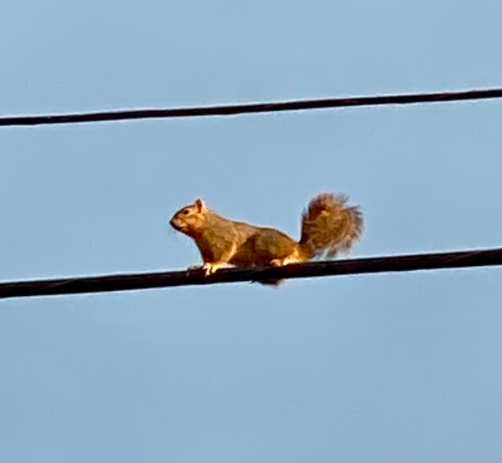Looking for a way to do science in your own community? Anne Olivier, an Adult Librarian at the Woodland Hills Branch of Los Angeles Public Library, wrote this post to share her tips about one of her favorite neighborhood science projects, iNaturalist, and to discuss an exciting opportunity to participate during the City Nature Challenge that runs from April 30 – May 3.

The Los Angeles Public Library Neighborhood Science Program
Neighborhood science (NeiSci), more commonly known as citizen science or crowd-sourced science, invites people of any age to gather scientific information locally and share it with the global scientific community. The Los Angeles Public Library runs a robust Neighborhood Science program, open to all.
Be a Neighborhood Scientist. Attend one of the Los Angeles Public Library’s free workshops or go solo and borrow one of their DIY kits from a participating library (available upon the re-opening of library locations).
Learn more:
- LAPL’s NeiSci page: lapl.org/neisci
- LAPL Neighborhood Science Program Listing: bit.ly/neiscievents
- LAPL Community Trees Challenge Page: lapl.org/nasa-trees
The City Nature Challenge
Looking to get started with neighborhood science right away? The Los Angeles City Nature Challenge is here! Every spring, Angelenos have the chance to become neighborhood naturalists during the City Nature Challenge, organized by the Natural History Museum of Los Angeles County and California Academy of Sciences. During the Challenge, Angelenos take pictures and make observations about the animals, insects and plants around them, and then upload them to the iNaturalist project. Even though you can participate in iNaturalist any day of the year, the City Nature Challenge is a fun time to celebrate biodiversity and try to document as much of it as possible.
Developed by the California Academy of Sciences, iNaturalist is a network that helps to identify the plants and animals around you. It also connects with a large body of scientists and naturalists. Sharing your observations helps create quality data for them.
This year the Challenge is running from April 30 to May 3 in 2021. You can read all about the City Nature Challenge on their website.
Start exploring
To get started, just download the iNaturalist app on your smartphone or access the project on your computer. Then you can start taking photos of wild plants and animals, and share them with the project. You’ll get suggestions right away that will help you identify your find.
Tip! iNaturalist is a SciStarter affiliate. Once you have created an account, before you begin making observations, visit the “My Info and Settings” of your SciStarter Dashboard and enter your iNaturalist username in the “Affiliation Integration” section. Then, all of your iNaturalist observations will be credited to your SciStarter dashboard once you’ve done this step. Sometimes, it may take up to 24 hours for an observation to be credited in your SciStarter dashboard.
“That’s great,” you may say, “but I don’t see interesting wild animals in my neighborhood!” The fact is, every time you go out in your backyard or go for a walk around the neighborhood, you’re likely to see one or more of our wild Los Angeles residents. Birds, plants (weeds count!), lizards and insects are all great subjects for your nature photoshoots. If you don’t have a backyard, head out to a local park.
Biodiversity in Los Angeles
Los Angeles is teeming with urban and suburban wildlife and there are many animals you likely see every day and simply don’t give them another thought.
For example, that brown squirrel up on the telephone wire? It’s very likely an Eastern Fox Squirrel, the largest species of tree squirrel native to North America. You may hear them making “chucking” noises at each other–or at the dog looking up and barking at them!
A few of the other small mammals commonly seen in Los Angeles include rabbits, raccoons, opossums and skunks. The latter three are best spotted at dawn or dusk.
Wildlife does not just mean mammals, however. Make sure you look for reptiles, insects and birds.
You’re likely to encounter the Western Fence Lizard basking on a wall on a sunny day. As to our insect and arachnid friends, some common insects you can spot are the Western Honeybee, the Gray Bird Grasshopper or the Argentine Ant.
And don’t forget to look up on your walks and observe the birds. On a typical Los Angeles day, you’re likely to see house sparrows, crows, mourning doves and perhaps a hummingbird or two in the garden. Pigeons and house sparrows may even be found in unexpected places, such as inside your local Home Depot!
Urban nature, spotted by a local librarian
Here are a few suburban friends I encountered on my own walk, and in my backyard:




Learn more
A terrific resource to check out for the City Nature Challenge (or any time if you’re interested in local wildlife) is Wild L.A. : explore the amazing nature in and around Los Angeles. Entertainingly written, it has great photos and descriptions of LA wildlife, and ideas for attracting wildlife such as birds to your backyard. There are also more ideas on how to get involved in community science. Remember: the City Nature Challenge isn’t the only time of year you can participate as a citizen naturalist. You can upload photos any time of the year into the iNaturalist app.
Next time you’re out walking, take a look at the flora and fauna around you and see what you can find. You might decide to become a city naturalist year-round!
Discover iNaturalist today.

